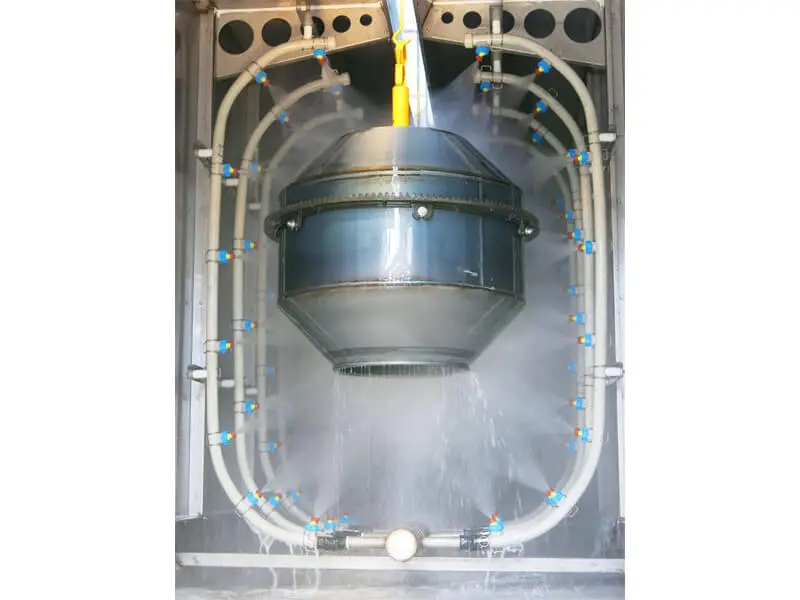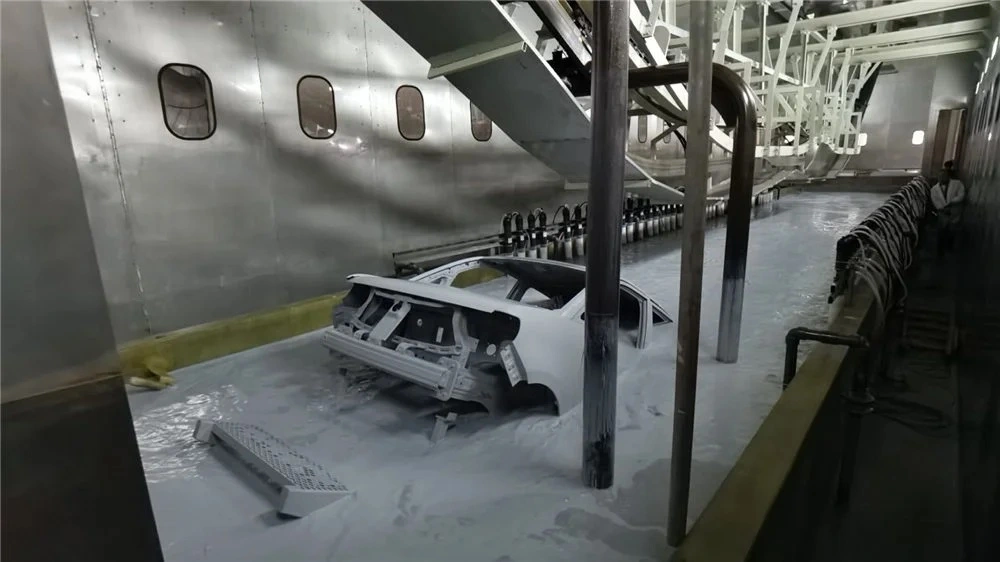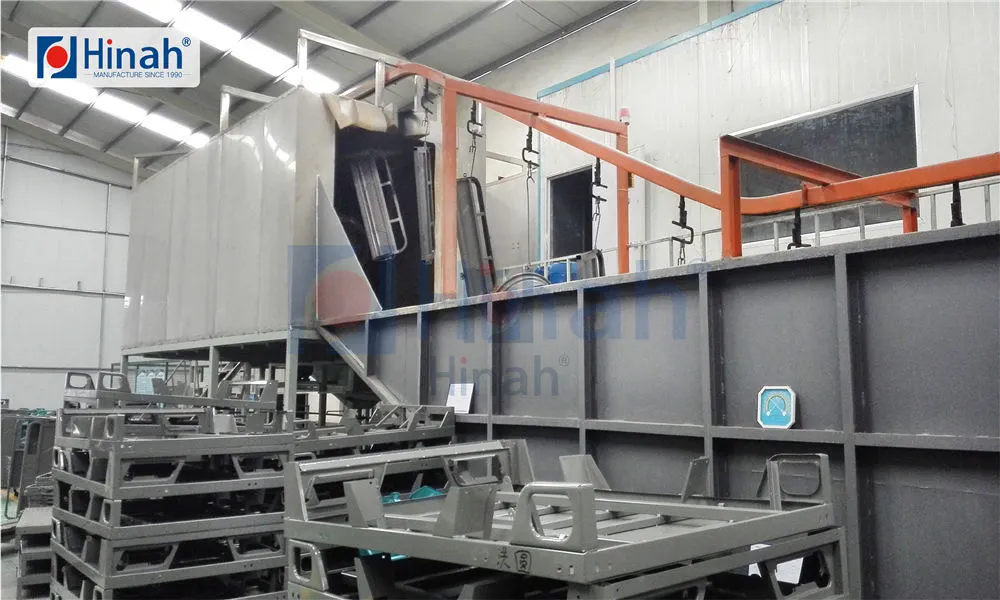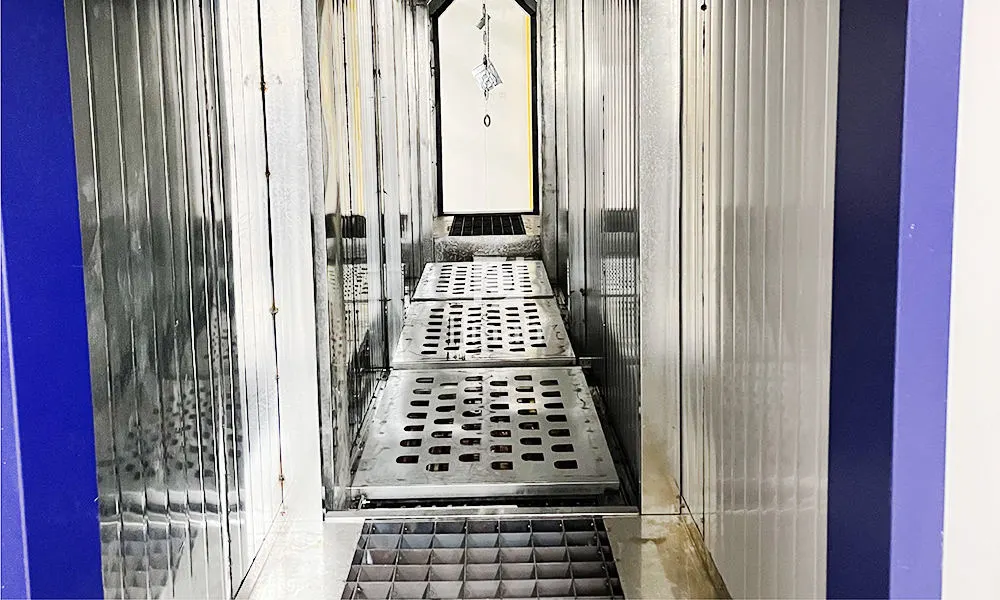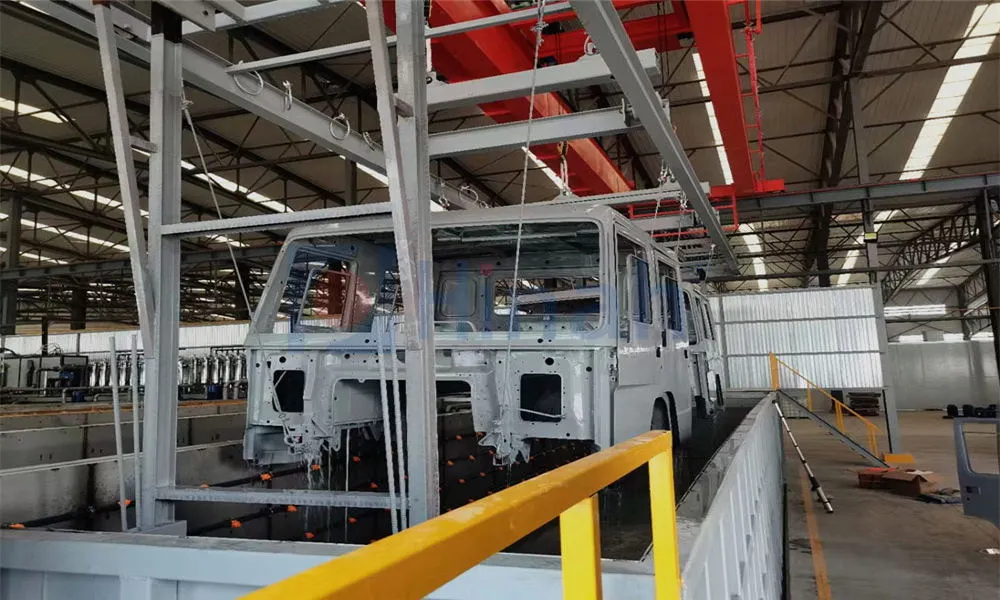In the competitive world of industrial finishing, powder coating reigns supreme for its durability, environmental benefits, cost-effectiveness, and stunning aesthetic versatility. At the heart of this technology lies the powder coating production line – a sophisticated, integrated system transforming raw metal components into finished, protected products. Understanding these lines, the powder coating powder manufacturing process, and how to select reliable powder coating production line manufacturers is crucial for any business seeking to implement or upgrade their finishing capabilities. This comprehensive guide dives deep into the technology, processes, and key players shaping this dynamic industry.
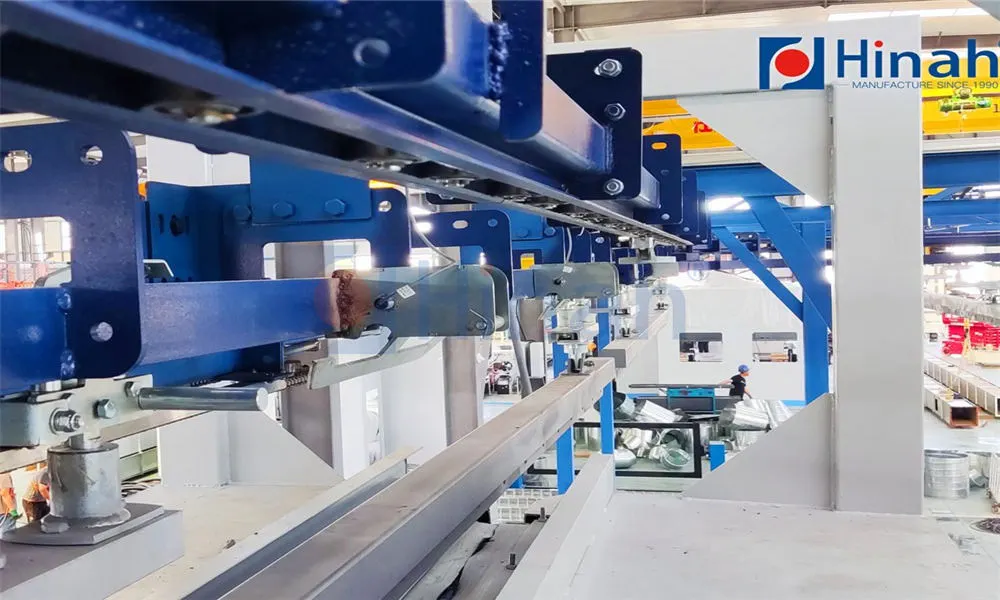
What is Powder Coating and Why is it Dominant?
Powder coating is a dry finishing process where finely ground particles of pigment and resin are electrostatically charged and sprayed onto a grounded workpiece. The coated part then enters a curing oven, where the powder melts, flows, and chemically crosslinks to form a smooth, hard, and incredibly durable finish. Unlike traditional liquid paints, powder coating contains no solvents, resulting in significantly lower VOC emissions, minimal waste (overspray can often be reclaimed and reused), and thicker, more uniform coatings that resist chipping, scratching, corrosion, and fading.
The dominance of powder coating spans industries: from automotive wheels and engine parts, through architectural aluminium extrusions and facades, to furniture, appliances, agricultural equipment, and consumer goods. Its combination of performance, aesthetics, and environmental compliance makes it the finish of choice for demanding applications.
A complete powder coating production line is a sequence of interconnected stations, each performing a critical function. The specific configuration depends on throughput, part size, geometry, and finish requirements, but a typical line includes:
Material Handling & Loading: Parts are loaded onto the conveyor system manually or automatically (robots, overhead conveyors, monorails).
Pre-treatment: This vital stage prepares the metal surface for optimal coating adhesion and corrosion resistance. Common stages include:
Cleaning: Alkaline or acidic cleaners remove oils, grease, dirt, and drawing compounds.
Rinsing: Multiple stages (often with deionized water) remove cleaning residues.
Conversion Coating: Application of phosphate (iron or zinc) or chromate-free (e.g., zirconium, titanium) coatings to enhance adhesion and corrosion resistance.
Final Rinsing & Sealing: Ensures removal of all chemicals and may involve a sealant rinse.
Drying: Heated dry-off oven removes all moisture before coating.
Powder Application Booth: The heart of the coating process. Features:
Spray Equipment: Manual spray guns or automated systems (reciprocators, robots) equipped with electrostatic charging.
Overspray Recovery: A sophisticated recovery system (often using cartridge filters or cyclones) captures airborne powder for potential reuse.
Controlled Environment: Ensures consistent application conditions.
Curing Oven: Parts enter a high-temperature oven (typically 150°C - 200°C / 300°F - 400°F). Here, the powder particles melt, flow out, and undergo a chemical reaction (curing) to form the final thermoset finish. Oven types include convection (electric or gas-fired), infrared (IR), or hybrid systems.
Cooling Zone: Parts are cooled sufficiently (often using ambient or forced air) to allow safe handling and unloading.
Unloading & Inspection: Finished parts are unloaded, inspected for quality (thickness, adhesion, appearance), and packaged.
Modern lines integrate sophisticated controls for temperature, conveyor speed, powder application parameters, and energy management, maximizing efficiency and quality.
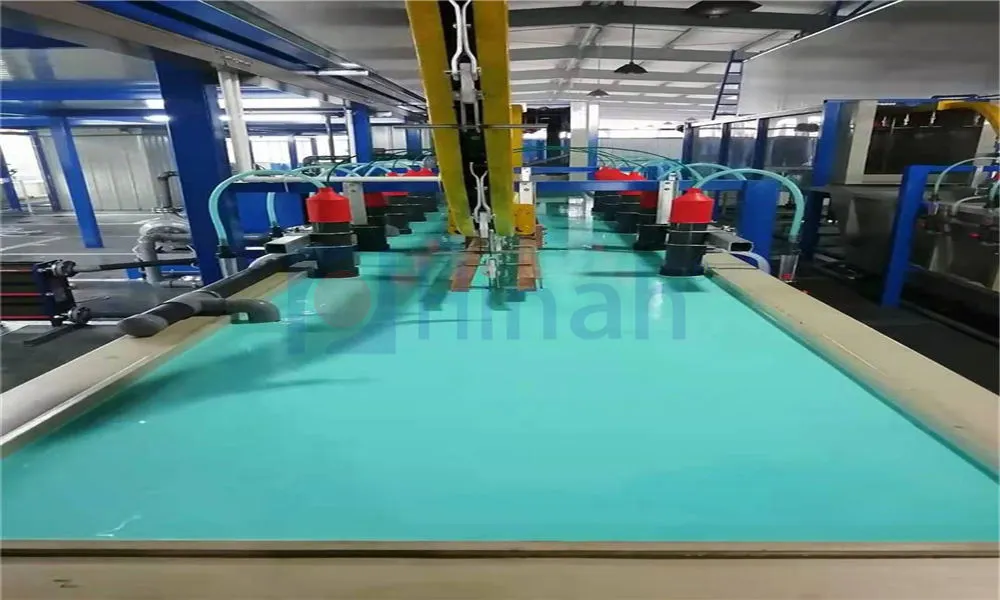
The Powder Coating Powder Manufacturing Process Demystified
The quality of the final finish is intrinsically linked to the quality of the powder itself. The powder coating powder manufacturing process is a precise, multi-stage operation:
Raw Material Weighing & Premixing: Precisely measured quantities of resin (epoxy, polyester, polyurethane, acrylic, or hybrids), hardeners (curing agents), pigments (for color), fillers (like calcium carbonate or barium sulphate for properties/cost), and additives (flow agents, degassing agents, texturizers, UV stabilizers) are dry-blended in large mixers.
Extrusion: The pre-mix is fed into a heated extruder. Inside the extruder barrel, intense mixing, shearing, and heating melt the resin and thoroughly disperse all ingredients into a homogeneous molten compound. Critical temperature control prevents premature curing.
Cooling & Chipping: The extruded molten material is rapidly cooled on chilled rollers into thin, brittle sheets or ribbons. These are then broken into small, uniform chips or flakes.
Fine Grinding (Micronization): The chips are fed into specialized grinding mills (typically air-classifying mills). Here, they are pulverized into a fine powder. Air classifiers within the mill ensure precise particle size distribution (usually 10-100 microns). Oversize particles are recycled.
Sieving & Classification: The ground powder passes through sieves (meshes) to remove any oversized particles or agglomerates, ensuring consistent particle size for optimal application and finish quality.
Post-Additives & Blending: Minor additives (e.g., flow aids to enhance leveling) may be blended in at this stage. Different powder batches or colors may also be blended for consistency.
Quality Control & Packaging: Rigorous testing checks chemical composition, particle size distribution, flow properties, gel time, curing profile, color, gloss, and application performance. Powder meeting specifications is packaged in sealed containers (boxes, bags, kegs) to prevent moisture absorption and contamination.
Understanding this complex powder coating powder manufacturing process highlights the technology and quality control required to produce powders suitable for high-performance application on a powder coating production line.
Key Considerations When Choosing Powder Coating Production Line Manufacturers
Selecting the right partner among powder coating production line manufacturers is a critical strategic decision impacting quality, efficiency, and long-term operational costs. Key factors to evaluate include:
Experience & Reputation: Look for manufacturers with a proven track record, extensive references in your industry or with similar part types, and a strong reputation for reliability and support.
Technical Expertise & Customization: Assess their ability to engineer a solution tailored to your specific needs (part size, geometry, throughput, finish requirements). Do they offer various conveyor types (overhead, monorail, belt), pre-treatment chemistries, booth configurations, and oven technologies?
Technology & Innovation: Do they utilize modern control systems, energy-efficient designs, and advanced application/recovery technologies? Are they leaders in automation integration (robots)?
Quality of Components: Inquire about the quality of key components (conveyors, pumps, spray guns, controls, oven insulation, recovery systems). Reputable manufacturers use high-grade, durable materials.
Powder & Process Knowledge: The best manufacturers understand the intricacies of the powder coating powder manufacturing process and how powder characteristics interact with their equipment for optimal results.
After-Sales Support & Service: Robust service networks, readily available spare parts, comprehensive training programs, and responsive technical support are non-negotiable for minimizing downtime.
Compliance & Safety: Ensure the manufacturer designs systems meeting all relevant local and international safety and environmental regulations.
Project Management: Evaluate their ability to manage the entire project lifecycle – design, manufacturing, installation, commissioning, and training – efficiently and on schedule.
Cost & Value: While initial cost is important, prioritize the total cost of ownership (TCO), considering energy efficiency, maintenance needs, powder utilization rates (transfer efficiency), and expected lifespan.
Leading powder coating production line manufacturers often specialize in certain market segments (e.g., high-volume automotive, job shops, architectural) or specific technologies (e.g., UV-cure lines, specialized pre-treatment).
Trends Shaping the Future of Powder Coating Lines
The powder coating production line industry is constantly evolving:
Increased Automation: Robotics for loading/unloading and powder application is becoming standard for high volume and complex parts, improving consistency and reducing labor costs.
Enhanced Energy Efficiency: Focus on heat recovery from ovens, improved oven insulation, high-efficiency burners, and optimized process control to reduce energy consumption significantly.
Digitalization & Industry 4.0: Integration of IoT sensors, data analytics, and centralized control systems for predictive maintenance, real-time process optimization, remote monitoring, and quality traceability.
Sustainable Solutions: Development of lines using lower-temperature cure powders, chromate-free pre-treatment chemistries, water-based pre-treatment, and systems designed for maximum powder utilization (minimizing waste).
Compact & Modular Designs: Offering more flexibility for smaller spaces or allowing easier future expansion of the powder coating production line.
Advanced Application Technologies: Innovations like tribo-charging guns for complex parts, improved gun control for uniform film build, and highly efficient recovery systems.
Focus on Powder Innovation: Lines are adapting to handle new powder chemistries like super-durable polyesters, hyper-smooth finishes, specialized textures, and low-cure/low-bake powders enabling coating of heat-sensitive substrates (MDF, composites).
The Crucial Link: Powder Quality Meets Production Line Performance
The synergy between the powder coating powder manufacturing process and the powder coating production line cannot be overstated. A perfectly formulated powder requires a well-designed, properly maintained, and correctly operated line to achieve its full potential. Key interactions include:
Particle Size & Application: Powder particle size distribution directly impacts fluidization in the feed hopper, transfer efficiency through the spray gun, and the smoothness of the final finish. Lines must be tuned for the specific powder used.
Flow Properties & Booth Design: Powder flow characteristics influence how well it moves through feed hoses and guns and how effectively overspray is recovered. Booth airflow must be optimized for the powder.
Cure Profile & Oven Performance: The precise time/temperature requirements of the powder dictate oven design, temperature uniformity, and control accuracy. Undercure or overbake leads to quality issues.
Transfer Efficiency: High transfer efficiency (the percentage of sprayed powder that adheres to the part) is a critical metric impacting material costs and environmental footprint. It's the result of optimal powder formulation, application equipment, and booth recovery system design working together.
Reputable powder coating production line manufacturers work closely with powder suppliers to ensure their systems maximize the performance of modern powders.
The powder coating production line represents a sophisticated marriage of chemical engineering, mechanical design, and process control. From the intricate powder coating powder manufacturing process creating the raw material to the integrated systems engineered by leading powder coating production line manufacturers, each step is crucial for delivering durable, high-quality, and environmentally responsible finishes. For businesses investing in powder coating, understanding the components of the line, the science behind the powder, and the criteria for selecting the right manufacturing partner is fundamental to achieving operational excellence, cost efficiency, and a superior finished product that meets the demands of today's markets. As technology advances towards greater automation, efficiency, and sustainability, the powder coating production line remains a cornerstone of modern industrial manufacturing.
FAQ
➤Poor Surface Preparation (Pre-treatment):
Inadequate cleaning (oils, grease, rust, mill scale remaining).
Inconsistent chemical bath concentrations or temperatures.
Poor rinsing leading to chemical residue ("carryover").
Ineffective conversion coating (phosphating, chromating, zirconium).
Contaminated rinse water.
Drying issues after pre-treatment (water spots).
➤Powder Application Problems:
Low Transfer Efficiency: Excessive powder overspray, wasting material.
Poor Wrap/Around: Difficulty coating recesses, corners, or edges (Faraday Cage Effect).
Inconsistent Film Thickness: Too thin (poor coverage/corrosion protection) or too thick (orange peel, runs, poor adhesion).
Back Ionization: Powder already deposited repels incoming powder, causing "starring" or "back spatter".
Poor Gun-to-Ground Circuit: Improper grounding leading to inconsistent charging/application.
Gun Spitting/Clogging: Blocked nozzles, worn components, or moisture in powder/lines.
Powder Contamination: Cross-contamination between colors, foreign debris in powder or booth.
➤Curing/Oven Issues:
Under-curing: Insufficient time or temperature. Results in poor adhesion, impact resistance, chemical resistance, and gloss.
Over-curing: Excessive time or temperature. Causes discoloration (yellowing), loss of gloss, brittleness, and reduced mechanical properties.
Uneven Curing: Temperature variations within the oven (hot/cold spots), poor airflow, or improper racking/part density.
Oven Contamination: Dust, grease, or volatiles landing on parts before or during cure (bake-on dirt).
Inaccurate Temperature Profiling: Miscalibration or lack of monitoring.
➤Powder & Feed System Problems:
Fluidization Issues: Powder not aerating properly (clumping, rat-holing, poor flow) due to moisture, compaction, wrong fluidizing media, or faulty hopper.
Inconsistent Powder Delivery: Erratic feed rates causing uneven application.
Powder Degradation: Overheating in the pump or hose, excessive recycling.
Moisture in Air Lines: Causes clumping, poor fluidization, and application defects.
Pump/Feeder Wear: Leading to inconsistent performance.
➤Booth & Recovery System Issues:
Poor Booth Airflow/Containment: Powder overspray escaping the booth, creating housekeeping and health issues.
Inefficient Powder Recovery: Filters clogging quickly, cyclone inefficiency, excessive powder loss.
Cross-Contamination: Poor booth cleaning between color changes or leaks in recovery ducting.
Fire/Explosion Risk: Buildup of powder fines, inadequate grounding, or ignition sources (static sparks).
➤Conveyor & Handling Problems:
Hanger/Part Movement: Parts swinging or rotating causing uneven application.
Poor Grounding via Conveyor: Intermittent grounding through hooks/fixtures.
Hook/Jig Build-Up: Excessive cured powder on hangers reduces conductivity and ground path.
Product Damage: Parts hitting each other or equipment.
➤Finished Film Defects:
Orange Peel: Uneven surface texture resembling orange skin (application, curing, or powder issue).
Pinholes/Craters: Small holes in the film (contamination, outgassing, moisture).
Runs/Sags: Excess powder applied or part overheated before cure.
Fish Eyes/Craters: Contamination repelling powder (oils, silicones).
Dirt/Inclusions: Foreign particles embedded in the film (booth, pre-treatment, powder).
Poor Adhesion: Film peeling or chipping off easily (prep, under-cure, contamination).
Color/Gloss Inconsistency: Batch variations, mixing issues, over/under cure.
Solvent Popping/Blisters: Volatiles (e.g., from pretreatment) trapped and expanding during cure.
➤Operational & Maintenance Issues:
Frequent Color Changes: Downtime, cleaning inefficiency, cross-contamination risk.
High Powder Waste: Due to poor transfer efficiency, recovery issues, or color changes.
Inadequate Maintenance: Lack of regular cleaning, gun/equipment servicing, filter changes.
Operator Skill/Training: Inconsistent application techniques or troubleshooting knowledge.
Environmental Controls: Temperature and humidity fluctuations affecting powder flow, charging, and fluidization.


